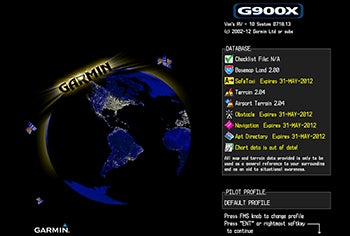A majority of pilots today have strayed from paper charts, making approach chart updates a breeze compared with the tedious paper chart replacement, which could take hours if you fly regularly in multiple states. While electronic data is much easier to update, you have to be vigilant to ensure that you have the most current information in the cockpit.
How do you know whether the system you are flying behind is up to date? As an aircraft owner you probably keep close tabs on your updates, but as a renter you should verify that the avionics have been updated. There is a page in each GPS or integrated flight deck that tells you the expiration date of the database. If that date has passed, you don’t have current data and you need to have some type of backup, such as an iPad or paper chart, to ensure that you have the most current information available to you.
But even if your database is up to date, you may be missing some key components. If you don’t pay close attention, you may actually arrive at your destination and find out that your database excludes the approach you are planning to fly. Garmin scans its databases for errors and removes data that appears to be inaccurate for any reason. This could include anything from specific instrument procedures to navigation aids and even special use airspace. You can find a list of excluded data here.
